Inside Out 2
 for some thematic elements.
for some thematic elements.
Reviewed by: Aiden Sexton
CONTRIBUTOR
| Moral Rating: | Good |
| Moviemaking Quality: |
|
| Primary Audience: | Family Kids Pre-Teens Teens Young-Adults Adults |
| Genre: | Animation Adventure Coming-of-Age Comedy |
| Length: | 1 hr. 36 min. |
| Year of Release: | 2024 |
| USA Release: |
June 14, 2024 (wide release—4,440 theaters) DVD: September 10, 2024 |
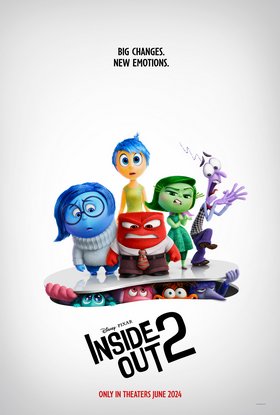


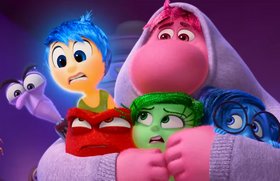
Girl’s 13th birthday
Coming-of-age
Puberty horomone issues
The battle is over the control of Riley’s conscience.
Teen angst
Controlling one’s strong pubescent emotions — fear, sadness, disgust, anger, anxiety, envy
Also:“Ennui” —a French word that combines the feeling of tiredness and boredom
Memory
Nostalgia
Friendship
But the fruit of the Spirit is love, joy, peace, patience, kindness, goodness, faithfulness, gentleness, self-control. Against such things there is no law. —Gal. 5:22-23
Overcoming FEAR, Anxiety and Worry—What does the Bible say? Answer

Teens! Have questions? Find answers in our popular TeenQs section. Get answers to your questions about life, dating and much more.
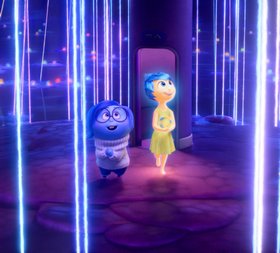
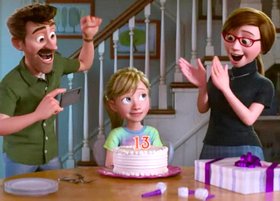


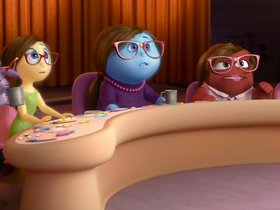
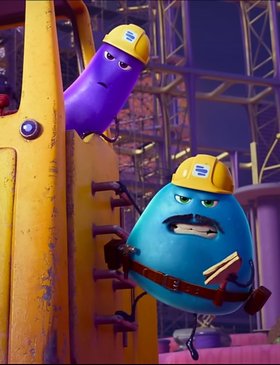

| Featuring |
|---|
|
Kensington Tallman … Riley Andersen, a 13-year-old girl in whose mind the emotions live (voice) Amy Poehler … Joy (voice) Phyllis Smith … Sadness (voice) Lewis Black … Anger (voice) Tony Hale … Fear (voice) Liza Lapira … Disgust (voice) Maya Hawke … Anxiety (voice) Ayo Edebiri … Envy (voice) Adèle Exarchopoulos … Ennui, bored emotion (voice) Paul Walter Hauser … Embarrassment (voice) Diane Lane … Mrs. Andersen (voice) Kyle MacLachlan … Mr. Andersen (voice) Lilimar … Valentina ‘Val’ Ortiz (voice) Yvette Nicole Brown … Coach Roberts (voice) Dave Goelz … Subconscious Guard Frank (voice) Frank Oz … Subconscious Guard Dave (voice) Bobby Moynihan … Forgetter Bobby (voice) Paula Poundstone … Forgetter Paula (voice) John Ratzenberger … Fritz (voice) Paula Pell … Mrs. Andersen’s Anger (voice) Flea … Mind Cop Worker Jake (voice) June Squibb … Nostalgia (voice) Ron Funches … Bloofy (voice) See all » |
| Director |
|
Kelsey Mann |
| Producer |
|
Pixar Animation Studios Walt Disney Pictures Pete Docter See all » |
| Distributor |
“Big changes. New emotions.”
Prequel: “Inside Out” (2015)
In the last thirty years, an abundance of animated movies have been released. A lot of them have been great, others disappointing.
Among the pool of good animated movies, there is at least one for every occasion (Ecclesiastes 3:1-8). There are ones I go to for a good laugh (“Kung Fu Panda” 2008) or a good cry (“Up” 2009). Others I watch for a light-hearted thrill-ride about courage, bravery, and friendship bonds (“How To Train Your Dragon” 2010), or else a devastating, heart-rending look on the horrors of war and the preciousness of familial bonds (“Grave of the Fireflies” 1988).
I loved the original “Inside Out” since I first saw it in theaters in 2015, and I have continued to love it after multiple rewatches. Those who have seen the movie know that it was practically begging for a sequel. Whereas most of us can name a handful of sequels that did not at all match up to their predecessor, I feel like that tends to be the case because a lot of those movies did not necessarily warrant a sequel (#TheMatrix). “Inside Out” most certainly did, however, and as a result I knew that if the sequel ended up being bad, it would have no excuse to be.
I’m happy to say that “Inside Out 2,” the nine-year-wait sequel to the original (which from now on I will refer to as “IO2” and “IO,” respectively), well deserves to be placed in the category of “great” animated movies, and is easily the best Pixar film (or possibly animated film!) since the original “IO.” I was delighted by the overall quality, as well as the minimal amount of concerning content (both of which I’ll cover later in detail).
Aside from this, “IO2” inhabits a unique and niche category for a specific viewing experience. That experience may as well be called “A Neurological Exploration of Puberty.” Not only does “IO2” do this extremely well (just as the first film dealt with the psychological issues that commonly develop in the early double digits), it does it in an entertaining and creative way that feels relatable, personal, and surprisingly real. Again, I’ll add to this later.
The Story
The plot of “IO2” is simple and easy to follow. Riley Anderson is now a teenager, and consequently has an extra load of psychological issues on her plate. The first scene features Riley playing in the last hockey game of the season with her fellow “Foghorns.” A high school teacher invites Riley and two of her friends to a three-day hockey summer camp where she will participate in tryouts for the “Firehawks” hockey team, as well as make new friends.
Just as she arrives to this camp, Riley’s head is bombarded with several new emotions. These include Anxiety, Envy, Embarrassment, and Ennui (a.k.a., boredom), as well as another one that I won’t give away. There arises a conflict between the original five emotions and the new ones, so that Anxiety (essentially the ring leader of the new emotions) decides to do away with Joy, Sadness, Anger, Fear, and Disgust because they’re no longer needed. Anxiety heads up operation “new Riley” by bottling the five emotions up and causing Riley to operate under new values that contradict the good ones put in by Joy. It’s up to the original quintet of emotions to find their way back to headquarters and stop Anxiety’s plan before too much goes wrong.
The story is very fast paced. It never once drags, but I never felt like I was being left in the dust, either. I understood what was going on every step of the way, and I’m sure smaller children can do the same easily. Even if they are not tracking with the plot (let alone with all the puberty talk), there is still much by way of subplots and visual imagery to be entertained by.
One thing to point out is that Riley is a much more prominent character in “IO2” than in the original. She has much more screen time here, and hence we are constantly cutting back and forth between her narrative and the conflict going on in her head. I think they managed to do this very well and in a way that is not confusing.
One of the things I was wondering about was if “IO2” would suffer from a classic case of “sequelitis.” I’m happy to say that this is not the case. Sure, the original did it first, and the same basic formula is used in “IO.” Even so, “IO2” works quite well because of how much more there is to tell.
Both of the movies have to do with change. In the original, the change is external. Riley and her family are forced to move from Minnesota to San Francisco, and she has to cope with that in her head. In “IO2,” the change she’s dealing with is internal, based on the psychological alterations that occur in everyone around that age. So, while this movie definitely borrows some things from the original, all the concepts here are still fresh and presented in a way that doesn’t feel cheap or mimicky.
The Good
I’ll start with the obvious. Like all the Pixar movies that have preceded it, “Inside Out 2” looks and sounds incredible. The animation is visually captivating and immersive, bursting with colors and shapes consistent with a typical fantastical Pixar landscape. While “IO2” was made 9 years after the original movie (almost to the day!), the visual feel and style of the sequel is very similar to the original, making it feel like it could have been made only two years after “IO,” which is the length of time that passed chronologically between the stories. The sound design is also well done.
“IO2” as a whole did an excellent job of drawing me in. From the first moment I was immediately on board with the characters, and what all their motives are. Even Anxiety, the clear antagonist of the film, has a motive that you can understand, even though you know she’s not doing the right thing. I really cared about what was going to happen, and there were times where I genuinely didn’t know what the next move should be. There were a few shocking left turns that made me say “oh no” out loud in the theater.
The dialog was also consistently on point. I regularly laughed and chuckled at all the right times. The interaction between all the characters is fun to watch, and feels very organic.
And, not to give anything away, but the ending is emotional and cathartic in a way that I didn’t expect, and it’s all the better for it.
A question that I had long before the movie was released is a question that most Christians who were fans of the first film had: “Is it going to be woke?” My head was practically swimming with ideas of Gay nods that could have taken place within the story. I’ll be honest, I literally had a page in my notebook for this review titled “LGBTQ+” so that I could write any relevant information down.
I’m delighted to report that I never had to write anything on that page, because to my knowledge there is nothing in this movie that would even hint at some sort of queer sexuality within Riley.
For starters, it’s clear throughout the movie that Riley is attracted to boys. Multiple times throughout it’s shown that she has a crush on at least four specific male characters (one of them is a videogame character, but still). Also, if you’ve seen “Riley’s First Date?,” a 5-minute short film that came out in 2015, she goes on a “date” with a boy. These details unequivocally establish Riley as a heterosexual.
One thing to say is that throughout most of the movie she is constantly trying to win the favor of girls at the camp, specifically one girl named Val. But nothing about her interactions with Val or any other girl are even remotely queer. At no point do the filmmakers indicate that she wants a queer type of relationship with girls. Rather, she’s (awkwardly) trying to fit in and make friends while her emotions (dialed up to nine, literally) are running amok in her head. Anyone who was or is her age knows what it was like to go through this awkward phase as a teenager, and therefore it makes perfect sense for a straight teenage girl to act this way.
I never saw anything that carried any woke baggage (e.g., no two moms sitting together, no Pride rainbow, no pronoun issues) . While I’m not perfect, and therefore want to hold the possibility at hand that I missed some tiny detail that may have contained something questionable, I did not notice anything. At one point Riley wears a multi-colored sweater (the same one she wears in the original), but the colors most likely represent her emotions rather than a Pride flag. Some wondered if Riley’s “Deep Dark Secret” was the fact that she was queer, but the end credits prove otherwise.
The Mixed Elements
This section contains things that aren’t necessarily good or bad. They’re just important to know going in.
The most obvious thing I can put here is that, while this is technically a movie for all ages, it’s targeted more toward teenagers going through adolescence, as well as for people who have gone through that phase of life and can relate to all the change inherent to that period. That said, while anyone can watch it and enjoy it, there are many themes in the movie that smaller children may not understand.
Here’s another thing on that same note. For lack of better words, a lot of “IO2” has a very “teenagesque” feel to it. A lot of the interactions between Riley and the “died-hair girls” feels angsty and juvenile. This makes perfect sense within the movie, though, as Riley is going through puberty and her emotions are working through these social and relational issues while she’s trying to make friends. Again, this is not a negative thing at all, but it’s something that smaller children may not be able to relate to or understand.
On a different note, I did find it slightly curious that at times some of the emotions are quite literally acting out of character. At times Joy gets angry or sad, Disgust gets fearful, and Anger gets empathetic—adding conflict to the dialog. Perhaps this can be explained by saying that they’re only able to control Riley to emote according to their title, while they as characters are not bound by that. I wouldn’t say it’s a plot hole; it’s really just a thought.
The Bad
As you’ve probably been able to guess, I love this movie, so the bad things when it comes to IO2’s quality are pretty much nitpicks. The average viewer will probably not be bothered by them.
While the story is mostly well paced, I think it may have been a little fast for me at times, especially near the end. The way everything wraps up feels like it could have been slightly less rushed. The “dark night of the soul” moment of “IO2” is a little short (unlike the original movie, which I think was written and executed to perfection), and I wish they had let that part last a little bit longer. And, considering that the runtime is 96 minutes, I think they could have easily done this without overstaying their welcome.
Also, I think that a couple of the emotions (nine regularly show up in the movie!) seem a little bit off to the side for most of it. I didn’t dislike any of the emotions, but there are times when I wonder if some of them are necessary, as they do not play a big part in the plot. On the other hand, there’s an argument to be made that the movie would have felt more bare without them.
Content of Concern
Thankfully the bad content in “IO2” is very minimal. I’ll do my best to avoid revealing crucial plot points here.
VIOLENCE: Light to mild. There are a few instances of mild peril. Some scenes are a bit suspenseful. A monster called “Dark Secret” appears for a couple of minutes, and he could be frightening to some children. The overall tone of “IO2” is a bit tense, but not in an overwhelming way. There’s also a blink-and-you’ll-miss-it shot of a girl throwing up. Overall, I think the violence is lighter than what’s in the original.
LANGUAGE: Light. Just a few mild exclamations (“oh my goodness,” “oh my gosh” (3x), “what the heck,” “for crying out loud”). One instance of name-calling (“turkey”). I also heard one occurrence of “jiminy mother loving toaster strudel” (played, of course, for laughs). I noticed no one taking God’s name in vain, or anything else like that.
NUDITY: Mild. We see a couple inches of Riley’s midriff in the mirror (played for laughs as she realizes her old clothes are no longer fitting). Lance Slashblade, a male video game character, shows a small midriff as well. In a girl’s hockey locker room and in one other place we see a couple of girls in modest sports bras, as well as one putting on deodorant (very brief, and not revealing). One of Riley’s emotions says, “We will not change in front of [our teammates].” Another emotion reassures her that it’s not considered weird in this context. We don’t see anyone changing at any point. For a split second you can see a couple inches of Embarrassment’s crack (played for laughs).
SEX: Mild. It’s clear in Riley’s head that she likes boys. The section of “Imagination Land” called “Mount Crushmore” features four boys that Riley has or had a crush on at one point or another. One of these is a video game character called Lance Slashblade, who appears for a couple minutes in the middle of the movie. This crush is humorously shared by Disgust as a few moments show. All of this is tastefully done. Other than that, there is an easily missed moment where Riley’s Dad, upon dropping her off at the hockey camp, rhetorically asks Mom if she has any “weekend plans.” She replies by listing some boring chores.
DRUGS/ALCOHOL: None. The closest we get to this is the occasional appearance of an energy drink. At one point one of the emotions drinks six of them in one go. I did not notice any drugs, alcohol, or smoking.
OCCULT: Light. A girl on Riley’s team wears a Hijab, meaning she’s a Muslim. Nothing is said about it.
WOKEISM: None! My little brother and I watched this movie like hawks for any hint of LGBTQ+ references or woke elements, and we did not see anything.
OTHER: In a couple scenes, Riley falls prey to some common side effects that come with puberty. This includes moodiness and strong body odor, both of which are pointed out by her mom (and for laughs).
Positive Moral Elements
The most obvious thing to talk about here is the conflict between the two opposing ideologies in this film that essentially drive the plot. Up until the other emotions show up, Riley is being controlled by Joy, whose philosophy is to do the right thing by being kind and faithful. In headquarters, there’s an object that represents Riley’s “Sense of Self,” and emanating out of it you can hear the words, “I’m a good person.” Riley also has a “Belief System,” holding many beliefs that make her who she is. Some of these include, “Mom and dad are proud of me,” “I’m kind” and “I’m a really good friend.” These are all good beliefs and ideas, and the movie presents them as such.
Anxiety, the emotion that kicks everyone out and takes command of Riley’s head, operates under a very different philosophy that goes, “If I’m a Firehawk, I won’t be alone.” The object that represents this philosophy has the words, “I’m not good enough” emanating from it. Anxiety plants many other negative thoughts in Riley’s “Belief System” that have similar rings to them. It’s the headbutting of these two ideologies that provides the plot impetus of the film.
When Joy holds sway in her head, Riley is constantly motivated by good values consistent with Scripture. When a classmate of hers named Grace (coincidence?) drops a jar of pennies for show and tell, Riley decides to come and help her pick them up while kindly introducing herself to her. This echos Biblical themes that tell us how we ought to value our neighbor.
“Do nothing from selfish ambition or conceit, but in humility count others more significant than yourselves. Let each of you look not only to his own interests, but also to the interests of others.” —Philippians 2:3-4
Q & A
What does the Bible say about HUMILITY?
For a follower of Christ, what is LOVE—a feeling, an emotion, or an action?
Another one of Riley’s core beliefs has to do with keeping her word to others, and another one is asking forgiveness. These go hand in hand throughout the narrative, and both of them are regularly on display.
“Lying lips are an abomination to the Lord, but those who act faithfully are his delight.” —Proverbs 12:22
“Whoever conceals his transgressions will not prosper, but he who confesses and forsakes them will obtain mercy.” —Proverbs 28:13
In contrast, Anxiety has the upperhand pretty much anytime Riley does anything bad. There are times where Riley breaks promises to her old friends, and at one time she steals an important object from someone she knows. This is clearly painted as wrong in the movie, both to the viewer and to Riley after she realizes the weight of the wrong things she has done.
Q & A
What is SIN AND WICKEDNESS? Is it just “bad people” that are sinners, or are YOU a sinner? Answer
Are you good enough to get to Heaven? Answer
How good is good enough? Answer
“IO2” does a great job of showing what the logical and personal outcomes of each of these philosophies are. There are multiple times where Riley is faced with the choice of playing on a different team than the one her best friends are on, even though she promised them that she would play with them. There is also another time where her concern for getting enough points in hockey begins to trump her concern for her friends. This contrast is powerful because it’s important to showcase these different ideologies in a way that glorifies the one and discourages the other.
*** MAJOR SPOILER *** In one of the most powerful scenes, the five original emotions arrive back at headquarters to find Anxiety zooming dangerously around the control panel, causing Riley to have a panic attack. Note: I’ve personally never had one, but the woman sitting behind me in the theater afterward told me that she had, and the movie’s portrayal is exactly what it’s like. Joy finds her way into the tornado next to Anxiety, and whispers to her, “You have to let Riley go.” Joy also says that what Anxiety is doing will not help Riley at all; in fact, it’s just hurting her. Eventually, Joy manages to pull Anxiety loose from the control panel and plug in Riley’s “Sense of Self.” The Bible explicitly commands us to not be anxious in several places (Philippians 4:6-7), which is clearly what Joy is pushing for here. *** END MAJOR SPOILER ***
Q & A
Now let’s talk about IO2’s treatment and exploration of puberty and adolescence. Here I think is where the movie is most brilliant, and it’s one of the few areas where I think “IO2” definitely improves upon the original film. What “IO2” does so well is it essentially uses Riley’s head as an allegory for what goes on inside a typical teenager’s head amidst all the changes that happen during this time of maturity, and it does so in a way that makes sense.
Here are a few examples, without giving too much away. Riley has islands in her head that correspond to certain values that she holds, such as “Friendship Island” and “Family Island,” among others. These islands connect and lead down to where her “Belief System” begins to form. They’re at the bottom of everything, which suggests that this is the bedrock of her very psyche. This was not there before, but it appeared once she hit puberty. This makes sense, because it is that time of life that most kids begin to think seriously about and determine the key values that they will hold on to for the rest of their lives.
Similarly, it makes sense whenever the new emotions show up because your feelings about yourself and other people become much more complex when you hit puberty, which necessarily calls for other emotions that can give voice to those feelings. It also makes perfect sense for Anxiety to “override” all other emotions in this context. After all, Anxiety “plans for the worst,” which is what the mind tends to do in Riley’s situation, meeting new people and having a rapidly changing psyche. Even though she means well, she ends up influencing Riley for the worse.
In one of the most tear-jerking lines in all of Pixar, Joy says, “I don’t know how to stop Anxiety. Maybe this is what happens when you grow up. You feel less joy.” This is, again, something that many people are able to relate to. Growing older often means taking on more cares and responsibilities, which often means that anxiety will take the wheel instead of true joy.
“For in much wisdom is much vexation, and he who increases knowledge increases sorrow.” —Ecclesiastes 1:18
There were also several changes made to “Imagination Land” that are consistent with puberty, much to the surprise of the emotions. Just to name a few, there is the “Parade of Future Careers” (a parade with a plethora of vocations to choose from), the “Rumor Mill” (a gossip hub), and “Mount Crushmore” (a humorous addition that shows how puberty often sparks interest in the opposite sex). There are several more changes like this that I really enjoyed seeing.
One of the later lines of “IO2” may as well be the message of it, where Joy says, “Every bit of Riley makes her who she is. And we love all of our girl. Every messy, beautiful piece of her.” For some going through puberty, it may feel frustrating to have to deal with certain emotions that we feel, or to know how to react in any given moment. But Joy reminds us that these hardships are to be expected during puberty, and it doesn’t make it any better to hate on yourself for the frustrating things that you do. There’s even a sign at one point in the movie that says, “Pardon Our Dust; Puberty Is Messy.” It can be helpful having these kinds of expectations going into the teen years.
Many things like this in “IO2” give parents a great stepping stone for talking to their children about these issues in a way that I think can be genuinely helpful. There are some honest and realistic explanations in “IO2” that help explain why teenagers tend to act a certain way. This is without a doubt a movie that parents and teenagers should watch together, and there are many possible conversations that could be started between them about these issues.
Negative Moral Elements
This section will be short, but there are some things to talk about here.
Early on in the movie, Riley is disrespectful towards her parents. For example, on a particularly rough morning, she says “Oh my gosh, mom, just go away!” As Riley’s parents drop her off at camp, she gets very frustrated at them as they make sure she has everything she needs. While quite a bit of interaction between her and her parents is positive, she never apologizes for doing things like this against her parents.
While I’m not defending Riley’s actions in this regard, it’s important to remember all these disrespectful moments within the context of Riley’s rapidly changing psyche from tweenie to teen. Near the beginning of “IO2” Riley’s emotional headquarters are torn down partially so that they can be rebuilt, but they have to stop in the middle because Riley wakes up. Because of this, the emotions have to control Riley’s actions with a broken dashboard, which results in all these disrespectful interactions. Additionally, the movie never condones Riley’s disrespectful behavior. On the contrary, the core tenets of Riley’s “Belief System” (“I’m a good friend;” “I’m a kind person”) directly contradict these actions that she’s temporarily indulging in.
The reason I include this in the negative is because it can be confusing for younger viewers who are not aware of the context behind her actions. It may be helpful to explain these to them.
Final Thoughts
Overall, “IO2” is a movie that I absolutely loved. It delivered in every way that I wanted it to, and in ways I didn’t even expect. The animation, story, dialog and character interaction really brings you into the movie. It feels suspenseful, emotional, and fun in all the right ways.
But easily my favorite part of this movie is the fact that it is a “conversation starter factory.” There are so many themes in “IO2” (many of which I have not listed here) that are wonderful launch pads for certain conversations between Christian parents and their children (specifically teens, but also smaller children).
I would highly recommend this movie to anyone, as I think it’s one of the few animated movies that have been made that is truly for everyone (2009’s “Fantastic Mr. Fox” being another). Thankfully, the surprising lack of offensive content makes “IO2” a movie that most parents will be fine with their kids watching, and will likely enjoy themselves.
“IO2,” similarly to the original, does one of the best things a movie can do for a person: it helps people understand themselves better. Puberty can be a confusing and frustrating transition time for most people, and movies like this can offer certain explanations (fantastically, of course) for why certain things happen in the psyche the way they do. In my opinion, that’s the thing that makes “IO2” shine the most.
- Violence: Mild
- Nudity: Mild
- Sex: Minor
- Vulgar/Crude language: Minor
- Occult: Minor
- Profane language: None
- Drugs/Alcohol: None
- Wokeism: None
Q & A
 Teens! Have questions? Find answers in our popular TeenQs section. Get answers to your questions about life, dating and much more.
Teens! Have questions? Find answers in our popular TeenQs section. Get answers to your questions about life, dating and much more.





My Ratings: Moral rating: Good / Moviemaking quality: 5